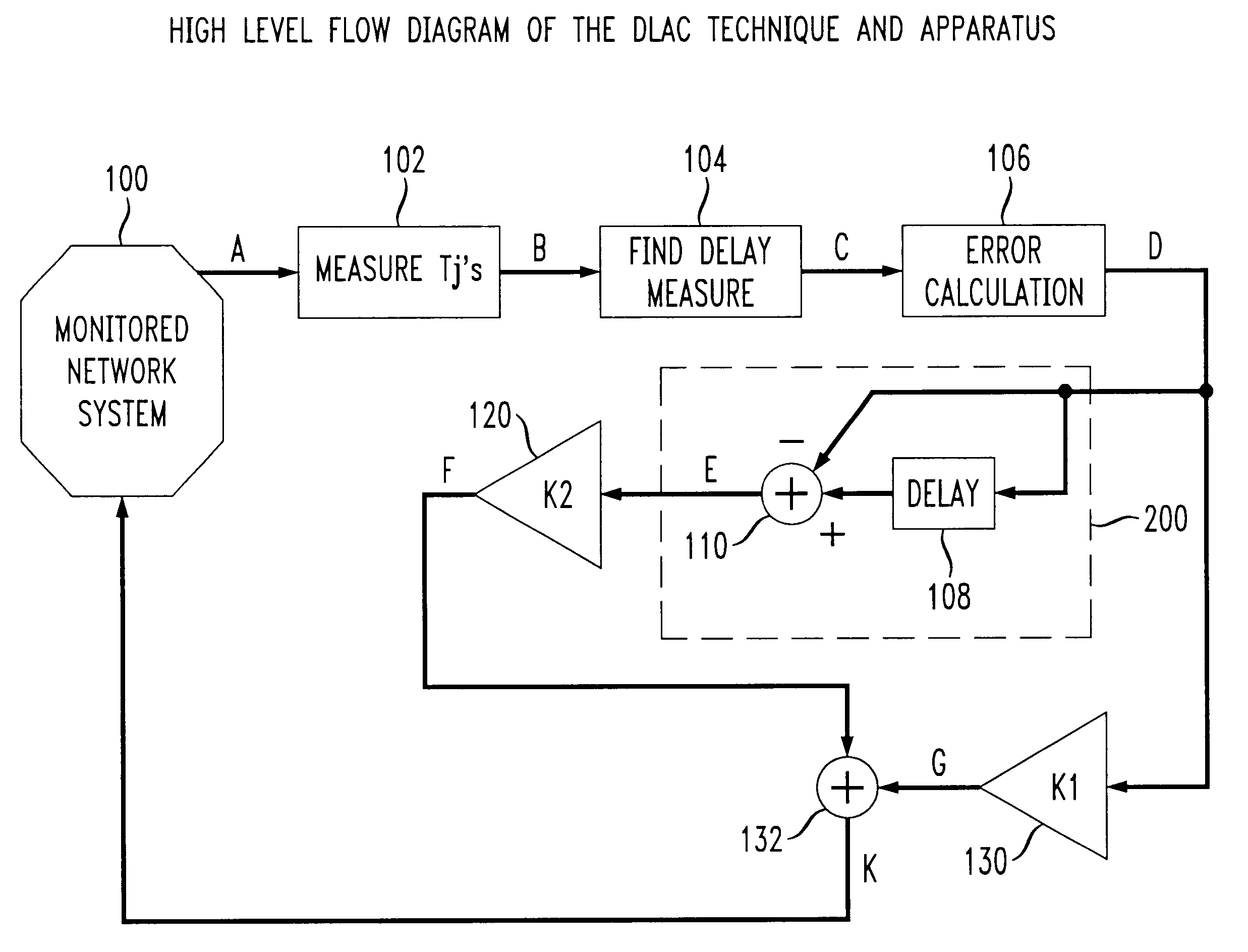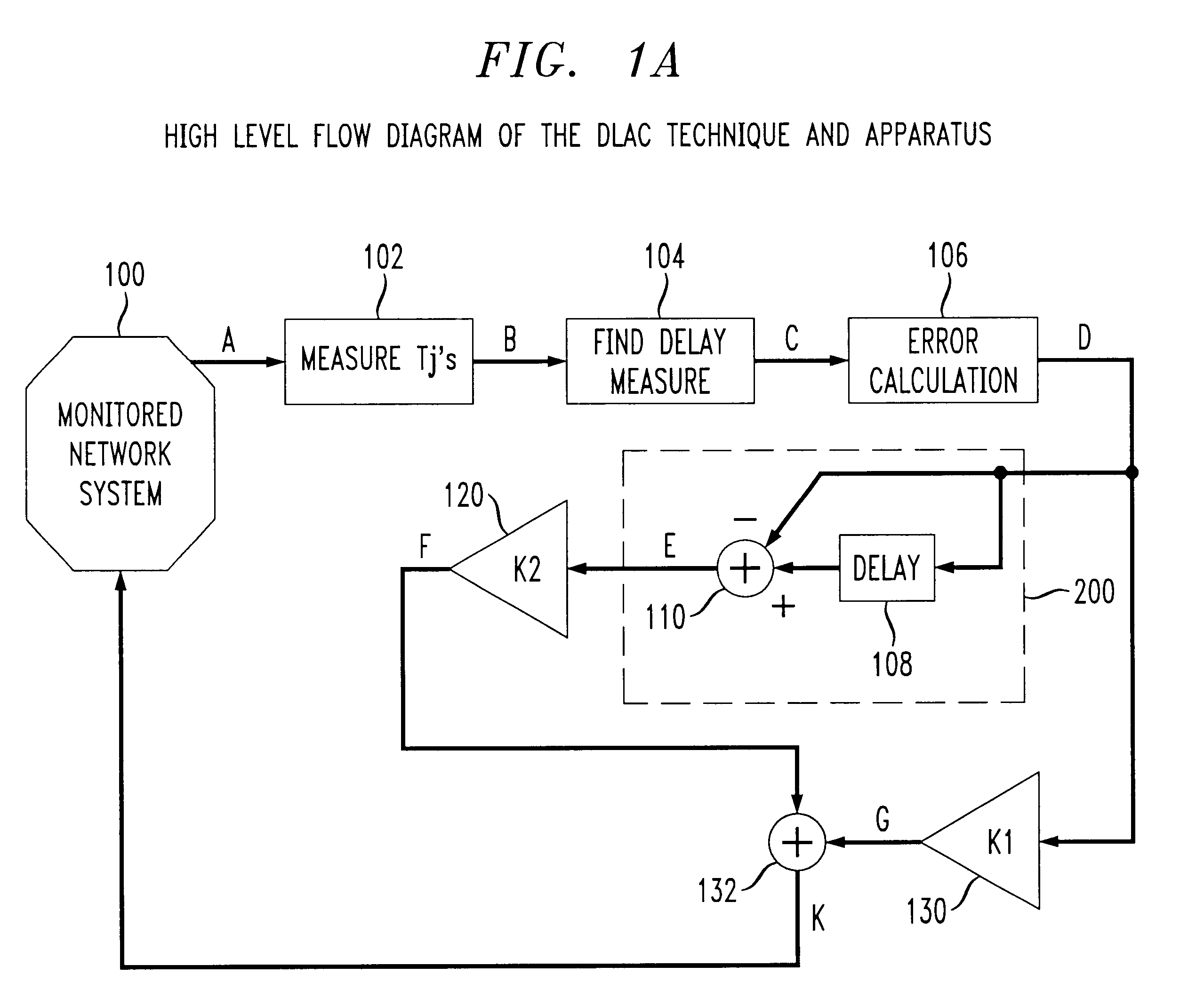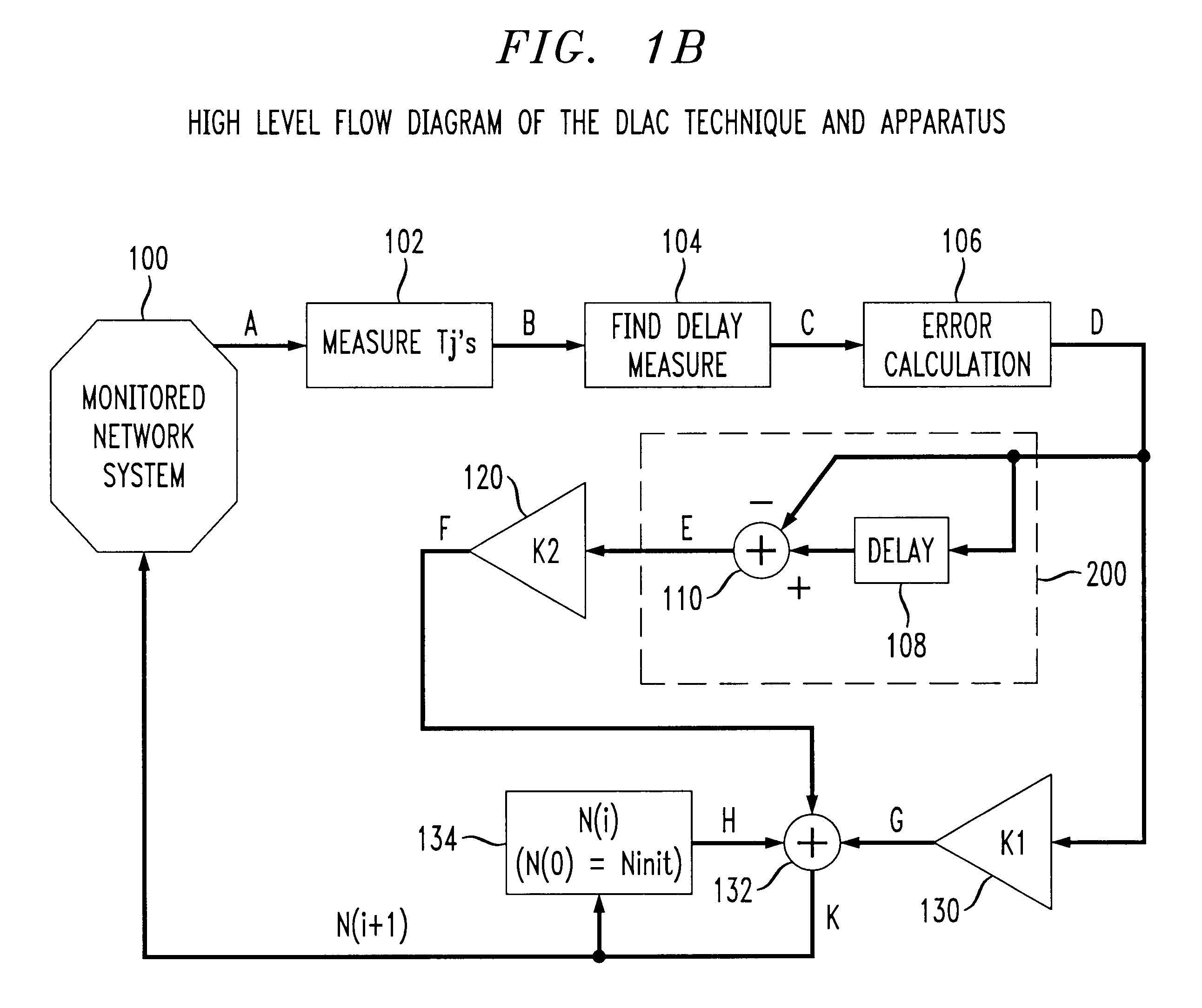Delay-locked admission control scheme in communications networks
a technology of communication network and delay-locked admission, applied in the field of communication network, can solve the problems of inefficient, variable and inconsistent time delay, and real-time signal delay-sensitive, and achieve the effect of reducing the cost of operation, and improving the quality of operation
- Summary
- Abstract
- Description
- Claims
- Application Information
AI Technical Summary
Benefits of technology
Problems solved by technology
Method used
Image
Examples
Embodiment Construction
The present invention provides an admission control mechanism for communications networks whereby the delay in the network switch is maintained (i.e., "locked") at a desired level using feedback parameters relating to an estimated current amount of delay in the network switch. In accordance with the principles of the present invention, only an adaptable number of new data signals (e.g., new queries or new telephone call requests) in a given time interval are allowed to enter the network switch during any particular time interval, to guarantee or closely achieve a desired delay performance.
In particular, in accordance with the principles of the present invention, an admission scheme is provided which bounds the processing delay of the network to a desired level based on substantially real-time estimation or measurement of the current delays. Importantly, the number of queries (i.e., series of related packets) admitted in any particular time interval is self-adapting, in the sense tha...
PUM
 Login to View More
Login to View More Abstract
Description
Claims
Application Information
 Login to View More
Login to View More - R&D
- Intellectual Property
- Life Sciences
- Materials
- Tech Scout
- Unparalleled Data Quality
- Higher Quality Content
- 60% Fewer Hallucinations
Browse by: Latest US Patents, China's latest patents, Technical Efficacy Thesaurus, Application Domain, Technology Topic, Popular Technical Reports.
© 2025 PatSnap. All rights reserved.Legal|Privacy policy|Modern Slavery Act Transparency Statement|Sitemap|About US| Contact US: help@patsnap.com



